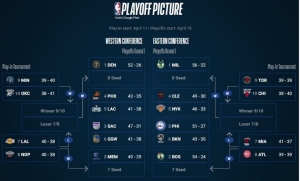Hentai: An In-Depth Exploration of its Origins, Evolution, and Cultural Impact
Table of Contents
- Introduction
- Historical Context
- Evolution of Hentai
- Genres and Themes
- Artistic Techniques
- Cultural Impact
- Psychological Perspectives
- Legal and Ethical Considerations
- Conclusion
1. Introduction
Hentai, a term originating from Japan, has evolved into a global phenomenon characterized by its distinct blend of erotic and often explicit imagery within the framework of anime and manga. The term itself, translating to "pervert" or "abnormality" in Japanese, carries connotations that extend far beyond its surface meaning. Hentai has captivated audiences worldwide, creating a unique subculture with intricate narratives, diverse genres, and a significant influence on both art and popular culture. check here nhentai
2. Historical Context
The roots of hentai can be traced back to traditional Japanese erotic art known as Shunga (春画). These works, which flourished during the Edo period (1603-1868), depicted explicit scenes of intimacy with exaggerated anatomical features, and were created using woodblock printing techniques. Shunga was not considered taboo but was rather a celebrated form of art, reflecting the liberal attitudes towards sexuality in Japan at the time.
As Japan modernized during the Meiji Restoration (1868-1912), Western influences began to reshape Japanese culture, including its erotic art. The term "hentai" started to emerge, initially referring to strange or perverse behavior, and later becoming associated with sexually explicit content. The 20th century saw the rise of manga and anime as dominant forms of entertainment, setting the stage for hentai to develop its distinct identity within these mediums.
3. Evolution of Hentai
Early 20th Century
In the early 1900s, the concept of hentai evolved alongside manga and anime. The post-World War II era saw a relaxation of censorship, allowing artists greater freedom to explore adult themes. This period marked the beginning of what we now recognize as hentai, with explicit content becoming more prevalent in underground publications known as doujinshi (self-published works).
1970s to 1980s: Emergence of Modern Hentai
The 1970s and 1980s were pivotal decades for hentai. The advent of gekiga (dramatic pictures) in manga provided a platform for more mature and explicit storytelling. Titles like "Urotsukidoji: Legend of the Overfiend" (1986) introduced the concept of tentacle erotica, which became a hallmark of the genre. This era also saw the rise of hentai anime, often released as OVA (Original Video Animation), which bypassed the censorship of television broadcasting.
1990s to 2000s: Mainstream Recognition and Technological Advancements
The 1990s and 2000s marked a period of technological advancement and increased accessibility. The internet played a crucial role in the dissemination of hentai, allowing for a global audience to access and share content. Hentai websites, forums, and fan translations flourished, further popularizing the genre outside Japan. This period also saw a diversification of genres, catering to a wide range of fetishes and preferences.
2010s to Present: Digital Transformation and Cultural Integration
In the 2010s, the digital revolution transformed the hentai industry. Digital distribution platforms, streaming services, and high-quality animation techniques enhanced the production and accessibility of hentai. The genre's integration into mainstream pop culture became more evident, with references and parodies appearing in various media forms. Today, hentai continues to evolve, reflecting changing societal attitudes towards sexuality and digital consumption.
4. Genres and Themes
Hentai encompasses a vast array of genres and themes, each catering to different tastes and preferences. Some of the most prominent genres include:
Vanilla
Vanilla hentai depicts consensual and romantic sexual relationships. It focuses on the emotional connection between characters, often emphasizing tenderness and mutual pleasure.
Futanari
Futanari features characters with both male and female genitalia. This genre explores themes of gender fluidity and transformation, and is popular for its unique blend of fantasy and erotica.
Yuri and Yaoi
Yuri (lesbian relationships) and Yaoi (gay male relationships) explore same-sex romantic and sexual interactions. These genres cater to diverse audiences, often focusing on character development and emotional depth.
Tentacle Erotica
Tentacle erotica involves creatures or entities with tentacles engaging in sexual activities with human characters. This genre, rooted in traditional Shunga art, plays with themes of power, fantasy, and the surreal.
BDSM and Fetish
Hentai often explores BDSM (bondage, discipline, dominance, and submission) and various fetishes. These works delve into themes of power dynamics, control, and pleasure through pain or restriction.
Loli and Shota
Loli (depicting young girls) and Shota (depicting young boys) are controversial genres focusing on characters with youthful appearances. These genres raise ethical concerns and are subject to varying degrees of regulation and censorship across different countries.
5. Artistic Techniques
Hentai's artistic techniques are a testament to its creative and expressive potential. The genre often employs exaggerated anatomical features, vibrant colors, and dynamic compositions to evoke arousal and engage viewers. Common techniques include:
Exaggeration
Artists often exaggerate certain physical attributes, such as breasts, genitals, and bodily proportions, to enhance the erotic appeal. This stylization creates a hyper-realistic aesthetic that distinguishes hentai from other forms of erotic art.
Dynamic Poses and Angles
Dynamic poses and angles are used to create a sense of movement and intensity in erotic scenes. This technique adds to the visual impact and immerses the viewer in the action.
Detailed Backgrounds and Settings
Detailed backgrounds and settings contribute to the narrative and atmosphere of hentai. Whether set in fantastical realms or everyday environments, the attention to detail enhances the storytelling and contextualizes the erotic elements.
Digital Tools and Techniques
Modern hentai artists utilize digital tools and software for coloring, shading, and animation. These advancements allow for greater precision, efficiency, and experimentation in creating visually striking and high-quality content.
6. Cultural Impact
Hentai's cultural impact is multifaceted, influencing various aspects of art, entertainment, and society. Some notable impacts include:
Influence on Mainstream Media
Hentai has influenced mainstream media through stylistic elements, themes, and tropes. References to hentai appear in music videos, television shows, and films, often as parodies or nods to its iconic imagery.
Global Subculture and Fandom
Hentai has fostered a global subculture with dedicated fan communities. Online forums, conventions, and fan art celebrate and critique hentai, creating a space for enthusiasts to connect and share their interests.
Artistic Innovation
The genre has driven artistic innovation, pushing boundaries in storytelling, character design, and animation techniques. Hentai artists often experiment with new styles and approaches, contributing to the broader evolution of anime and manga.
Controversy and Debate
Hentai's explicit content and themes have sparked controversy and debate, particularly regarding issues of consent, representation, and ethical boundaries. These discussions reflect broader societal tensions surrounding sexuality, censorship, and artistic freedom.
7. Psychological Perspectives
Hentai offers intriguing insights into human sexuality, desire, and fantasy. Psychological perspectives on hentai explore its role in:
Expression of Fantasies
Hentai provides a medium for expressing and exploring sexual fantasies that may be taboo or unattainable in reality. It allows individuals to engage with their desires in a controlled and imaginative context.
Coping Mechanism
For some, hentai serves as a coping mechanism for stress, loneliness, or sexual dissatisfaction. It offers a form of escapism and emotional release, allowing individuals to navigate complex feelings and experiences.
Impact on Sexual Behavior
The impact of hentai on sexual behavior and attitudes is a topic of ongoing research and debate. While some studies suggest that exposure to hentai can influence perceptions of sexuality, others argue that it does not necessarily translate to real-world behavior.
8. Legal and Ethical Considerations
The production, distribution, and consumption of hentai are subject to varying legal and ethical considerations across different regions. Key issues include:
Censorship and Regulation
Hentai faces different levels of censorship and regulation based on local laws and cultural norms. In Japan, censorship laws mandate the obscuration of genitalia, livepositively while other countries may impose stricter or more lenient regulations.
Age Restrictions and Consent
The depiction of characters and themes involving minors raises significant ethical and legal concerns. Many jurisdictions have laws prohibiting the production or distribution of content that sexualizes minors, leading to debates over artistic expression and the protection of vulnerable individuals.
Intellectual Property and Piracy
The digital nature of hentai has led to issues of intellectual property and piracy. Unauthorized distribution and reproduction of hentai works pose challenges for creators seeking to protect their rights and monetize their content.
9. Conclusion
Hentai stands as a complex and multifaceted genre that intertwines art, sexuality, and culture in unique ways. Its evolution from traditional Shunga art to a global subculture reflects broader societal changes and technological advancements. As a form of erotic expression, hentai continues to push boundaries, provoke debate, and influence both mainstream and niche media. Understanding hentai requires an appreciation of its historical context, artistic techniques, and the diverse perspectives it encompasses. Whether viewed as a controversial phenomenon or a legitimate art form, hentai remains an enduring and dynamic aspect of contemporary culture.






